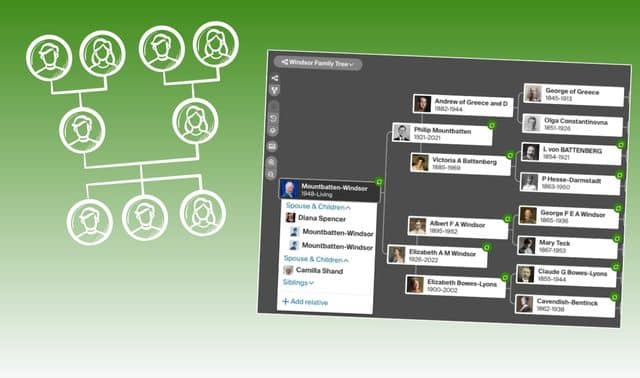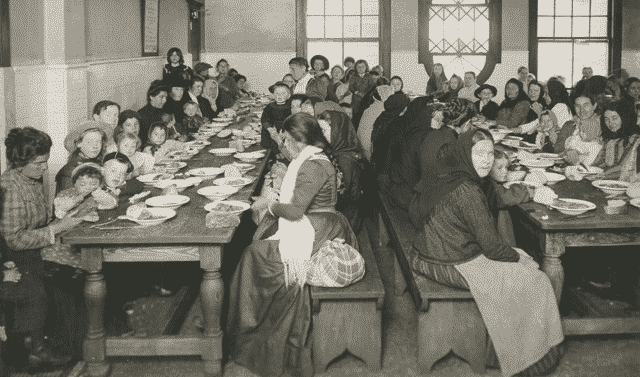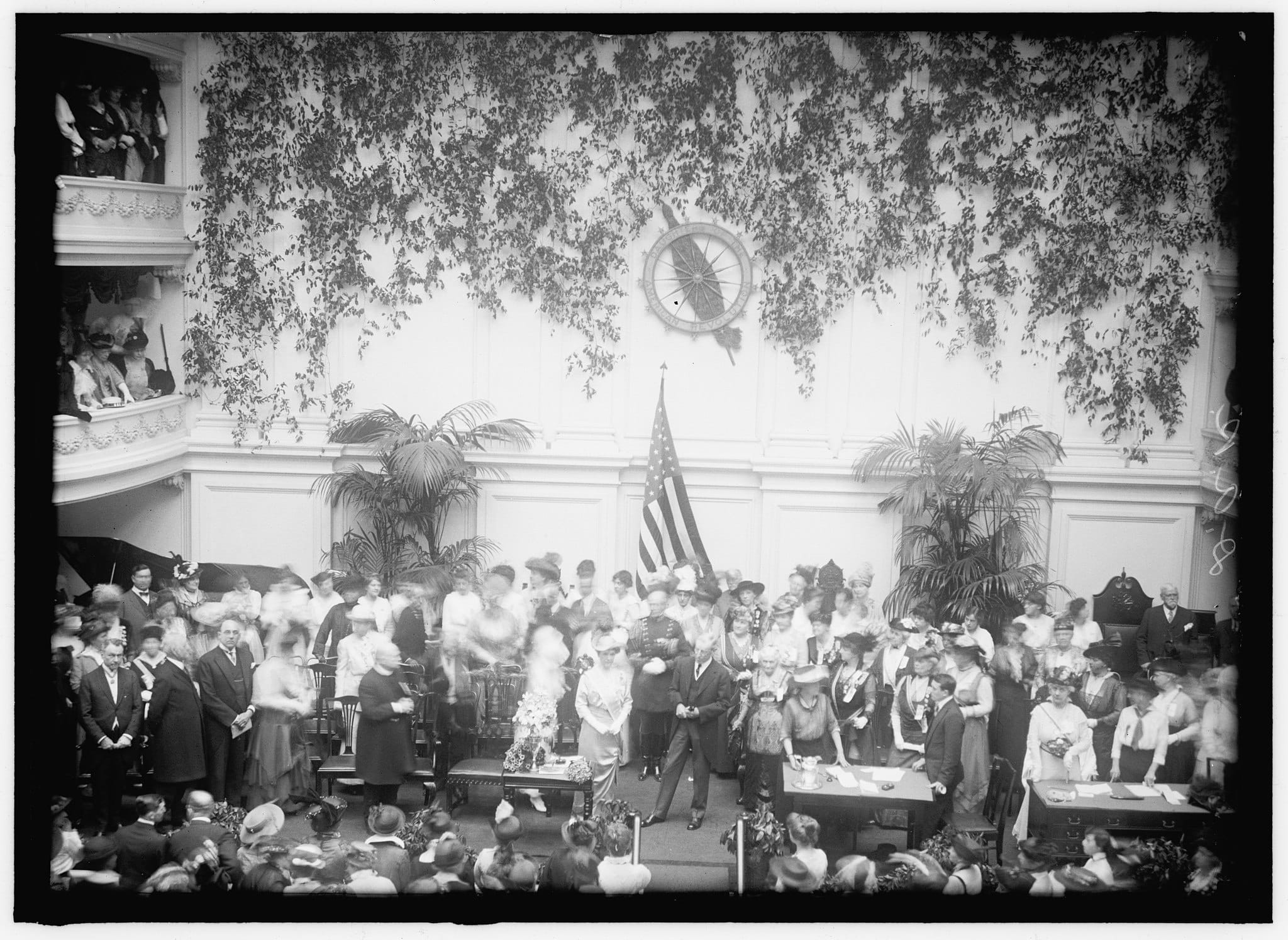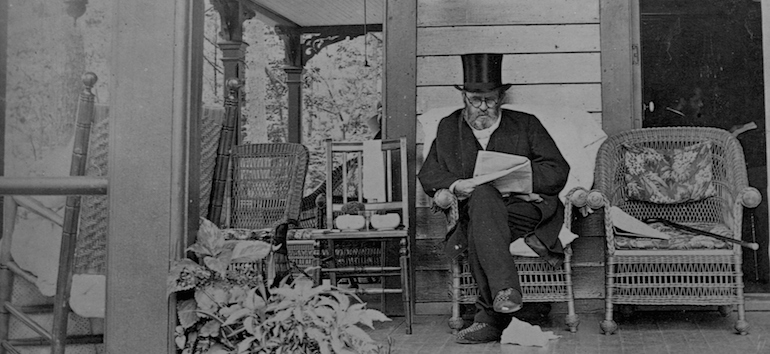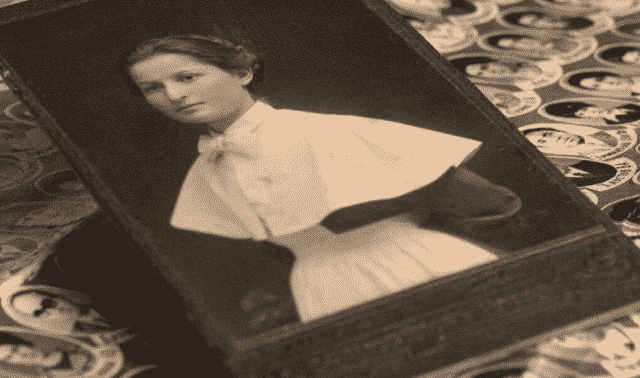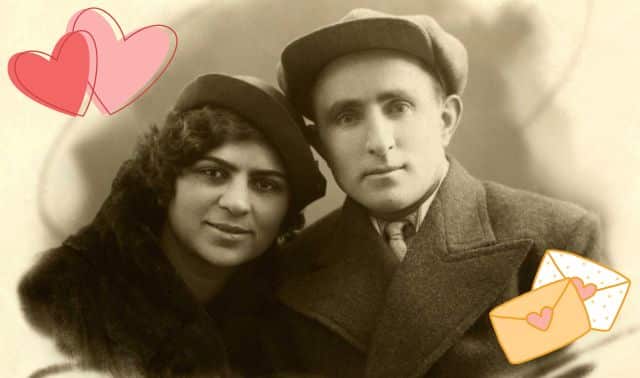Sign up for the Family Tree Newsletter Plus, you’ll receive our 10 Essential Genealogy Research Forms PDF as a special thank you!
Get Your Free Genealogy Forms
"*" indicates required fields

In the dark days before the internet, a homebody couldn’t be much of a genealogist. Tracing your family tree meant getting out and about, squinting at microfilm, digging through library shelves and tromping through cemeteries. Today, however, much of what was once only on microfilm or buried in archives is only a few clicks away online, and even tombstone records are increasingly available as bits and bytes.
In one weekend, using the web, you can accomplish more than genealogists of yore could do in a week or two—all without leaving the house. Doubt it? Consider these seven weekend genealogy projects, none of which requires that you change out of your pajamas. Come Monday morning, you’ll be amazed at how many branches and leaves you’ve added to your family tree. (Oh, and by Monday morning, you really ought to get dressed.)
1. Follow your family back in the census.
This project is an obvious choice to spend a weekend on, especially since the 1950 census was released in April of 2022. By following each branch of your family back one census at a time, you can establish an every-decade baseline for all your other research. It’s easy to forget that the census is an essential source of many kinds of family tree facts—not just names and dates. The 1850, 1860, 1870, 1880 and mostly missing 1890 censuses asked if a couple had been married within the year. Veteran status can be determined from 1890, 1910 and 1930 questions. Year of immigration to the United States was asked in 1900, 1910, 1920 and 1930. Naturalization status, occupation and street address are just a few of the other details to be found in various federal censuses.
Even though such juicy details become more elusive before 1850—the first census to list everyone in the household by name—you still can use the census to probe further back. Enumerations from 1880 through 1930, for example, listed the places of birth of each person’s parents—often an event dating prior to 1850.
It’s never been easier, moreover, to follow your family back through the US census without cranking a single roll of microfilm, thanks in part to a surge of subscription sites. Complete indexes and images are available online at Ancestry.com and are coming to Archives.com. The free FamilySearch.org has searchable indexes for every census and record images for many (to see records for some censuses, FamilySearch sends you to Ancestry.com or Fold3, where you’ll need to be a subscriber). Findmypast lets you search the 1940 and 1950 US censuses, then pay à la carte or subscribe to see the records. You can also find some census information on MyHeritage.
The National Archives has a helpful page that tells you where you can find census records by year.
2. Locate your family’s graves.
Tombstone research—a genealogy project that could never have been done from your den back when—is increasingly internet-friendly. Dedicate a weekend to poring over your genealogy files for blanks in burials and deaths. Make a list of everybody for whom you don’t have an exact death and burial date and place, then crank up your computer. (And while filling in those blanks, of course, you also may come across missing birth information.)
Start your search with the 226 million memorials at Find A Grave. Even if you’ve looked here before, it’s worth revisiting this ever-growing collection of user-submitted grave records, many with photos. Once you’ve found an ancestor, take advantage of the site’s ability to retrieve other records in the same cemetery—you may locate dearly departeds you didn’t know about. Next, supplement your search with Interment.net. Also check out the USGenWeb Tombstone Transcription Project and BillionGraves. You even can find tombstone images at the Flickr photo-sharing site, whose Graves, Tombs and Cemeteries group has some 30,000 members and more than 220,000 photos.
If an ancestor was a US military veteran, search veterans cemeteries stateside with the Nationwide Gravesite Locator and overseas at the American Battle Monuments Commission. State-specific sites might be worth a few moments of your weekend, too. Ohio Memory, for example, lets you search a Graves Registration Card collection for folks buried in the Buckeye State. Several states have databases specifically of veterans’ burial places, such as Minnesota’s Veterans Graves Registration Index.
3. Post your family tree online.
To be honest, this is unlikely to take a whole weekend unless you’re starting data entry from scratch. But you might need Saturday and Sunday both to decide among all the options. Some sites add tempting perks for parking your pedigree there, such as the ability on Ancestry.com to view and research your tree with its smartphone app. Once you’ve uploaded to MyHeritage.com (which also has an app), the site will comb its billion-plus profiles for matches to your data, and email you when new matches go online. WeRelate, the world’s largest genealogy wiki, also combines pedigree posting with research and “watch lists.” Or you might want to put your tree on one of the many sites that specialize in family tree hosting. Among those we included in our latest 101 Best Websites roundup were Geni, Tribal Pages and WikiTree. Most have collaboration features that make it a snap to spend your weekend polishing your pedigree with distant cousins.
Whatever site (or sites) you select, if you already have data entered in a genealogy software program, start by exporting a GEDCOM file. Once you’ve uploaded your GEDCOM to the site, look for privacy settings that let you make the tree public or share it with certain folks. Spend the rest of the weekend scanning the site for matches to your tree and messaging fellow researchers. With a little luck, you’ll make enough fresh finds to occupy you next weekend.
4. Find ancestors in the news.
It’s easy to overlook old newspapers as a resource because in the past, they’ve been a pain to research. Without some sort of index, finding ancestors in newspapers makes locating a needle in a haystack look easy.
Newspaper digitization projects have made things a bit simpler. Pick an ancestor or two, then start with the Library of Congress’ free Chronicling America newspaper collection, which boasts digitized newspapers dating from 1770 to 1963. You can narrow your search by state and year range, or pick Advanced Search to select specific papers and fine-tune your search. Also free is Newspaper Abstracts, which clips the good stuff (genealogically speaking) from historical newspapers.
Among subscription sites, GenealogyBank specializes in old newspapers, with more than 13,000 American newspapers to peruse. Other fee-based sites with notable newspaper collections include Ancestry.com, Archives.com and World Vital Records. Plenty of state websites go in-depth on old newspapers, too, including the Colorado Historic Newspaper Collection and the Wyoming Newspaper Project.
Still other library and archives sites include a wealth of digitized papers among their offerings. Try Alaska Libraries, Archives and Museums, Digital Library of Georgia, Kentucky Historical Society (under Kentuckiana Digital Library)and Missouri Digital Heritage.
5. Solve immigration mysteries.
As a nation of immigrants, nothing gnaws at us like not knowing how our ancestors got here. Set aside a weekend to try to fill in those blanks. Make a list of ancestors you believe were the first in the family to arrive in America, their birth dates, where they may have emigrated from, where they landed here, and when you think they may have arrived (or the date of the first US record you have of them). Add each ancestor’s siblings, as immigrants often booked passage in family groups, as well as spouses and children if they were a family before coming to America.
Search for everybody on your list whose arrival dates are appropriate, in the free Ellis Island database (1892-1924) and Ellis Island’s predecessor, Castle Garden (1820-1892). But don’t stop there: If you have pesky immigration puzzles in your tree, you’ve likely already struck out at those sites. You can perform a more detailed search of these databases at Stephen P. Morse’s One-Step Pages. The free National Archives Access to Archival Databases also indexes New York arrivals from various places during various years.
Not everybody arrived in America through New York City. You can search other ports’ extant passenger lists, plus naturalization and other immigration-related records, on Ancestry.com. For passenger indexes from a variety of ports and years, try the free Immigrant Ships Transcribers Guild and TheShipsList.
Pre-1820 arrivals may require searching the Immigration and Travel collection at Ancestry.com. It includes emigration databases from Sweden and Hamburg, Germany, as well as P. William Filby’s Passenger and Immigration Lists Index, 1500s-1900s (not part of the free Ancestry Library Edition, unfortunately, but also available on World Vital Records).
State and local sites also can help solve immigration mysteries. The Massachusetts Archives has an ongoing project to index passenger manifests from the Port of Boston (1848-1891). The Cook County clerk’s site has more than a half-million naturalization petitions spanning 1871 to 1929, for immigrants in Chicago and beyond.
6. Read up on your ancestral hometown.
Even if they weren’t famous, your ancestors might have made history of sorts in their hometowns. As the nation matured, America’s middle-sized towns took a lot of pride in their pasts and often published local histories recording everything from early settlers to hometown boys’ military service, from prominent families to entrepreneurial efforts large and small. These town histories have increasingly been digitized to find a wider audience concerned with who ran the town’s first grocery store—namely you, that pioneering grocer’s descendant.
Start with online collections. The invaluable Google Books can bring hometown histories right to your computer screen, while helping search for ancestors within. Not every hit you’ll get searching for a town or county name (paired with history if you get too many results) will link to a full digitized book—but you may be pleasantly surprised with publications such as History of the Town of Shirley, Massachusetts: From its early settlement to AD 1882.
Then use Ancestry.com’s card catalog, searching for a town or county name, to zoom in on the thrilling (to you, maybe) books, such as A History of Morris County, New Jersey Embracing Upwards of Two Centuries, 1710-1913, in its local histories collection. You can search individual titles by name and keyword, but you also might want to browse pages and consult the book’s index for family finds. After all, you’ve got the whole weekend.
FamilySearch.org has many local histories in its free Family History Books collection. And don’t neglect digital collections of state and local archives and libraries. The Cincinnati public library’s Virtual Library, for example, holds among its local histories History of Fayette County, Ohio: Her People, Industries and Institutions.
What should you look for in hometown histories? Genealogical details, of course: That Shirley, Mass., book has pages of pedigrees listing who married whom and their offspring. But note less obviously useful information, too: Where did settlers of the town typically come from? (Maybe your ancestors did, too.) What industries and religions predominated? Who went off to fight in America’s wars.
7. Salute your patriot ancestors.
Speaking of wars, ancestors who served in the Revolutionary War can be the key to striking genealogical gold in the Daughters of the American Revolution’s (DAR) Genealogical Research System (GRS). But these interlocking databases are worth a weekend’s exploration even if you don’t think you have a DAR-recognized “patriot ancestor.” Somebody in your family tree may overlap with the pedigree of somebody else who does qualify for DAR membership. Those folks are among the 7.1 million people named in the Descendants part of the GRS. This database crosslinks with files of patriot ancestors and of DAR members who qualified based on their service.
Even if your family was still in the old country in 1776, somebody you’re researching might have married into a clan with Revolutionary roots. Martha Frances Hassell, for example, shows no patriot forebear in the DAR system—but she’s there nonetheless by virtue of her marriage to James Polk Dickinson, a descendant of Revolutionary War Pvt. Matthew Davis. So Hassell researchers could find not only Martha’s marriage details but also her birth and death dates and places in the DAR database.
Start your weekend project by searching the Descendants database by at least a last name, plus first name and state of birth if possible. Using the Advanced Search, you also can narrow by state of death, spouse’s name and his or her state of birth and/or death. In the list of results, click the family tree icon to the left of a person’s name to view the full pedigree, from patriot to member. You can order a PDF of the DAR’s Record Copy of the member’s paperwork with just a few more clicks. If that proves useful, follow up by ordering copies of the associated documentation—birth records, family Bible pages and more—which will arrive by postal mail.
Icons on the Descendants pedigree page will take you to the DAR member’s information (silhouette of a woman’s head) and to the patriot ancestor’s page (soldier figure), which lists other DAR applications based on that person’s service. Clicking Cross-Reference Search lets you query for more details about any name in that generation’s data.
If your DAR search reveals patriot ancestors, you can spend part of your weekend researching them at sites including Fold3 and Ancestry.com. A search of Fold3 quickly finds a Revolutionary War pension for Matthew Davis in North Carolina. And Ancestry.com turns up his name in North Carolina rosters as well as an application for another organization, the Sons of the American Revolution.
Such ancestors, of course, didn’t earn our independence by staying at home in their pajamas. But we’re pretty sure that “life, liberty and the pursuit of happiness” includes the freedom to spend the weekend as a homebody, filling in the blanks in your family tree.
A version of this article appeared in the October/November 2012 issue of Family Tree Magazine.
Last updated, October 2023
Related Reads
ADVERTISEMENT



